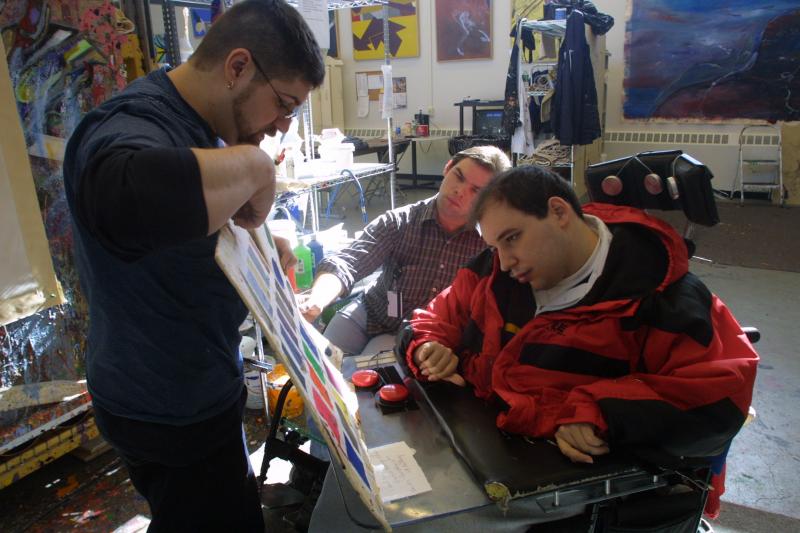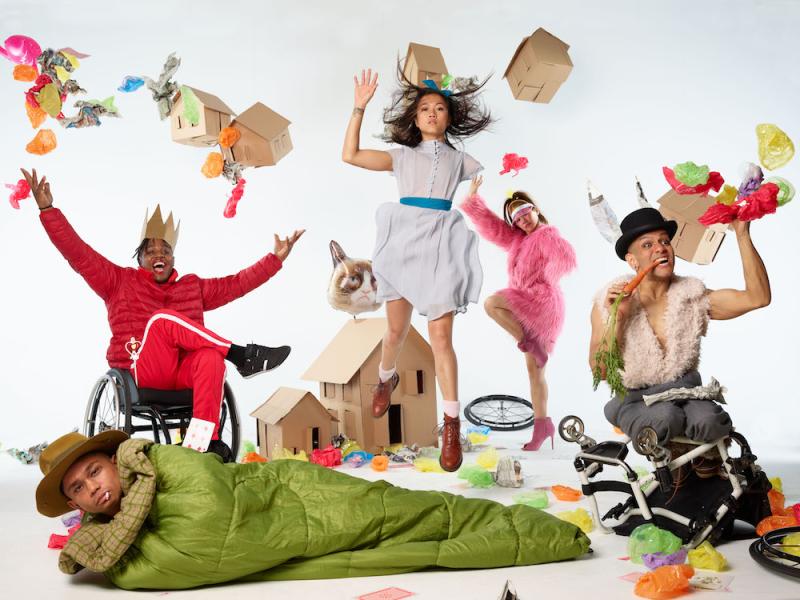Celebrating the 31st Anniversary of the Americans with Disabilities Act

The passage of the Americans with Disabilities Act (ADA) in 1990 prohibited discrimination against Americans living with disabilities, mandating barrier-free access—both physically and programmatically—to employment; public services, such as transportation; communication; and to places such as restaurants, schools, and arts venues. The ADA continues to grant access and independence to 61 million Americans, 26 percent of the population, who live with some type of disability, though there is still a long way to go. As we mark the 31st anniversary of ADA today, here is a collection of resources, including a brief history of how the National Endowment for the Arts has integrated the ADA into its work, stories from artists with disabilities, and several video on careers in the arts for people with disabilities.
Making Sure No One is Excluded: In this American Artscape story, Arts Endowment Director of Accessibility talks about the ways in which the agency has been a leader at the intersection of arts and accessibility.
Voices from the Field: Celebrating the 30th Anniversary of the Americans with Disabilities Act: In this story from the NEA blog, artists and arts leaders including Gaelynn Lea, Jerron Herman, and Antoine Hunter speak about the impact of ADA on their lives and arts careers.
A Conversation with Gordon Sasaki: In this episode of the National Endowment for the Arts podcast, we speak with visual artist and disability rights advocate Gordon Sasaki.
A Conversation with Rebekah Taussig: In this episode of the National Endowment for the Arts podcast, we speak with teacher and advocate Rebekah Taussig about her recently published first book, Sitting Pretty The View from My Ordinary Resilient Disabled Body.
Resources to Help Ensure Accessibility of Your Virtual Events for People with Disabilities: The NEA accessibility team shares best practices for ensuring that digital programming, including webinars, live-streamed events, and virtual art galleries is truly accessible to all.
Another Set of Hands: This American Artscape article looks at how, with support from the Arts Endowment, Matheny Medical and Educational Center created their innovative Arts Access program in 1993 to help patients with exceptionally complex disabilities become painters, poets, playwrights, and choreographers.
Inside AXIS Dance Company: A Conversation with the Company: In this story from the NEA blog, four dancers with AXIS Dance Company, a regular NEA grantee, talk about what it's like to dance with a physically integrated dance company and how it's changed their perspective on disability.
A Matter of Choice? Arts Participation Patterns of Disabled Americans: Using data from the 2012 Survey of Public Participation in the Arts, this report is the first, nationally representative analysis of arts-participation patterns among people with disabilities.

AXIS Dance Company in Alice. Photo by David DeSilva
The following videos are part of a series presented by the Arts Endowment and Art Beyond Sight to promote careers in the arts for people with disabilities. Visit the Accessibility page at arts.gov to view our full library of accessibility resources.




